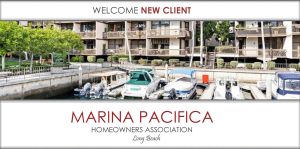
Last time we checked, the mortality rate was 100%. This means that owners of real property within homeowners associations (“HOA’s” or “Associations”) will inevitably pass away at some point. This leaves many questions for Boards and management about how to navigate issues surrounding the separate interest still titled in the name of the deceased.
Enforcement of Governing Documents Against Deceased Owners
For obvious reasons, dead owners usually do not maintain their properties in good condition and are often ineffective landlords if their separate interest is occupied by a tenant. Management and Boards may not even know that an owner has passed away such that they continue to send violation letters and fine these deceased owners to no avail.
If an owner is ignoring fines and other enforcement action combined with not paying monthly assessments or maintaining a property, it is wise to investigate whether the owner is still living. This is especially important because there is a one-year statute of limitation from the date of an owner’s death to pursue enforcement or collection-related action per Cal. Code Civ. Proc. § 366.2. This strict deadline applies even if the HOA had no knowledge the owner was deceased. Law firms can assist Associations with public records searches to detect an open probate or a death certificate.
Court Order or Consent Required to Enter Onto Property
Although many CC&Rs have provisions allowing an HOA and its agents to enter onto a property upon prior notice to cure certain compliance issues, it is recommended for the protection of the HOA and its vendors that a court order first be obtained before entering property without advance express consent. This is the case even if the HOA believes the property is unoccupied because California case law holds that a contractual right to self-help is not a defense to a claim for forcible entry. (Glass v. Najafi (2000) 78 Cal.App.4th 45, 48–49, 92; See also Daluiso v. Boone (1969) 71 Cal.2d 484, 493, “Regardless of who has the right to possession, orderly procedure and preservation of the peace require that the actual possession shall not be disturbed except by legal process.”)
Collection Methods Against a Deceased Owner
Since unpaid regular and special assessments may attach to the property, the lien-related collection process is similar for living and deceased owners, except that with a deceased owner, you are dealing with the administrator or personal representative of the decedent’s estate instead of with the living owner.
If an Association wants to sue a deceased owner or make a claim against their estate for monies owed as a creditor, it must pursue these remedies against the deceased owner’s estate. Suing an estate of a decedent or making a claim for monies owed against them requires an open probate action in superior court. The problem is that sometimes, an owner passes away with no will or next of kin in which case a probate of the owner’s estate may not be opened.
In such cases, management may contact the public administrator of the county in which the decedent’s property is located and request that they open a probate. If the public administrator fails to do so or drags their feet, the HOA can open a probate action as a creditor to make sure the probate case is opened and the claim for monies owed is timely submitted.
Once a probate is open, a creditor has only four months from the date the executor or administrator is appointed to file a claim in probate. (Cal. Code Civ. Proc. § 377.40; Prob. Code §§9100 et seq.). An HOA should be mindful that the one-year limit to file a claim against a deceased owner is not extended by this four-month deadline.
Thankfully, an HOA’s ability to foreclose on a secured lien via the nonjudicial foreclosure process set forth in Cal. Civ. Code §§ 2924–2924h is not affected by the aforementioned one-year statute of limitations to seek money judgments, injunctive relief, and/or judicial foreclosure against a deceased person. This is because such debt is secured by the property and is not attached to the deceased person.
Evicting Tenants
Deceased owners can leave occupants behind who may not be compliant with the HOA’s governing documents or who may create nuisance conditions as is frequently the case with squatters. The law provides an owner with the standing to evict tenants via an unlawful detainer action. When the owner is deceased, the HOA can and should call the estate (through its administrator) to a hearing and fine it for violations of the occupants. The administrator of the estate has the authority to gain tenant compliance via eviction or otherwise. Fining the estate can be an effective way to gain the estate’s compliance. Some governing documents even have provisions assigning the standing to evict tenants who violate the governing documents to the HOA via an unlawful detainer action. These provisions usually allow the HOA to charge the owner (or their estate) for the fees and costs incurred to evict non-compliant tenants if the owner or their estate fails to act.
Biohazard Cleanup
It is a macabre reality that occupants can and do pass away in the property. If the occupant lived alone and had no close friends or family, it can be weeks until the death is discovered. An HOA may first learn about such an occurrence via a report of unpleasant odors or vectors emanating from the property. If a dead occupant is suspected, law enforcement should be called. Once the body has been transported by the coroner, the biological materials left behind can pose a risk to the health and safety of the community’s residents such that the Association may consider calling in a biohazard clean up vendor to handle the situation. Depending on the language in the governing documents, the cost of the cleanup may become a charge against the deceased owner’s estate provided the proper processes are followed pursuant to the HOA’s enforcement policy and the laws applicable to probate claims.
 |
Collection and enforcement proceedings against deceased owners in California is a complex area of law such that HOA’s should contact their legal counsel to ensure proper compliance and to avoid missing important statutory deadlines. |
 The Corporate Transparency Act (“CTA”), enacted in December 2020, aims to increase corporate ownership transparency to combat money laundering, terrorism financing, and other illegal activities. The CTA requires many small businesses, classified as “reporting companies,” to submit beneficial ownership information (“BOI”) reports to the Financial Crimes Enforcement Network (“FinCEN”). This requirement extends to certain homeowners associations (“HOAs”) and involves disclosing personal details—such as names, addresses, and copies of driver’s licenses or passports—about individuals with “significant control” over the HOA (i.e., members of the HOA’s Board of Directors).
The Corporate Transparency Act (“CTA”), enacted in December 2020, aims to increase corporate ownership transparency to combat money laundering, terrorism financing, and other illegal activities. The CTA requires many small businesses, classified as “reporting companies,” to submit beneficial ownership information (“BOI”) reports to the Financial Crimes Enforcement Network (“FinCEN”). This requirement extends to certain homeowners associations (“HOAs”) and involves disclosing personal details—such as names, addresses, and copies of driver’s licenses or passports—about individuals with “significant control” over the HOA (i.e., members of the HOA’s Board of Directors).  HOA Lawyer Blog
HOA Lawyer Blog


 *New Legislation
*New Legislation
 *New Legislation
*New Legislation In case you missed it,
In case you missed it,  *New Case Law
*New Case Law It’s our privilege to welcome Marina Pacifica Homeowners Association to Tinnelly Law Group’s growing family of HOA clients.
It’s our privilege to welcome Marina Pacifica Homeowners Association to Tinnelly Law Group’s growing family of HOA clients. Homeowners Associations (“HOAs”) rely on the efforts of their volunteer directors, officers, and
Homeowners Associations (“HOAs”) rely on the efforts of their volunteer directors, officers, and  If your homeowners association (“HOA”) is located in a high-risk fire area, what can your Board of Directors do if the current master policy of fire and casualty insurance on your condominium or townhome buildings is not renewed? Due to the massive wildfires that have swept California over the past two years, many insurance companies (and their re-insurance partners) are reassessing their willingness to underwrite fire and casualty insurance in the state. Those carriers that are willing to write coverage are limiting their risk exposure by greatly reducing the coverage limits available for purchase. To compound this problem, the premiums being quoted are 5-10 times the amount of the prior year’s premium for much less coverage.
If your homeowners association (“HOA”) is located in a high-risk fire area, what can your Board of Directors do if the current master policy of fire and casualty insurance on your condominium or townhome buildings is not renewed? Due to the massive wildfires that have swept California over the past two years, many insurance companies (and their re-insurance partners) are reassessing their willingness to underwrite fire and casualty insurance in the state. Those carriers that are willing to write coverage are limiting their risk exposure by greatly reducing the coverage limits available for purchase. To compound this problem, the premiums being quoted are 5-10 times the amount of the prior year’s premium for much less coverage. *New Case Law
*New Case Law